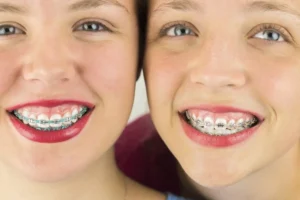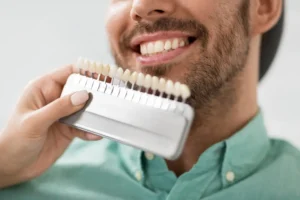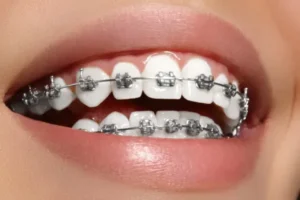When Braces Are First Applied
Orthodontists refer to the procedure of getting braces as “bonding”. This is because a special medical-grade glue bonds the brackets to each tooth. A metal archwire connects to bands or tubes on the back teeth and secures to the brackets.
The bonding process doesn’t cause pain. You might feel some discomfort when the orthodontist and assistants adjust the appliance in your mouth. Numerous individuals dislike the flavor of the adhesive, however, the attachment of the braces is painless.
The procedure lasts about 1-2 hours. When you leave the office, you’ll have instructions for care and tools to help with any discomfort at home.
Now, let’s explore the “types of braces”. One type is “lingual braces”, which are placed behind the teeth. They are less visible but can be more uncomfortable.
During the tooth movement process, you might experience some pain. But don’t worry, there are effective ways to relieve braces pain. For example, you can use a cold compress or take over-the-counter pain relievers.
Remember to follow the instructions given by your orthodontist. They are there to ensure your comfort and the success of your treatment.
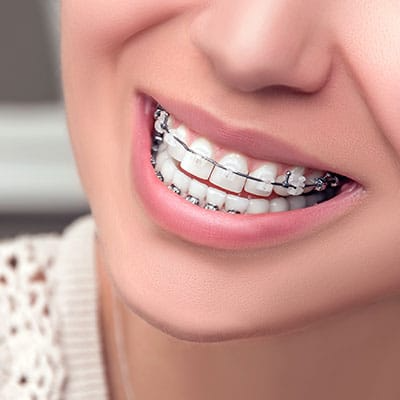
After Getting Braces On
When you get braces, you might feel some discomfort. This is normal. A sign that your teeth are adjusting to the brackets and wires. This is part of orthodontic care for braces patients.
The braces apply pressure to straighten your smile. Your teeth, gums, lips, and tongue need time to adapt to these new sensations. To maintain your oral health, it’s important to reduce inflammation during this adjustment period.
Any of the following are normal types of pain or discomfort:
- Pressure on the teeth
- Swollen or inflammed gums
- Irritated cheeks, lips, and gums
- Jaw tension
- Headaches
- Sensitivity to heat or cold
- Lightly bleeding gums
- Difficulty chewing food
- Feeling of loose teeth
All the above are your body’s normal, appropriate responses to the new orthodontic appliance. In the majority of cases, this discomfort fades within the first few days as you adjust to your braces.

Getting Braces Tightened During Treatment Pain or Discomfort
Once you have your braces, regular visits to the orthodontist are necessary. These check-ups and adjustments occur every few weeks, typically every 4-6 weeks.
The orthodontist and their team adjust them. They tighten parts like the wire and springs. They also replace old rubber bands with new ones.
This adjustment can cause discomfort, similar to when you first got your braces. Nonetheless, the unease should dissipate within 1-3 days following your appointment.
To manage this discomfort during brace adjustments, you can use over-the-counter pain relievers. You can also soothe the soreness by consuming cool items. Ice cream, popsicles, or a cool glass of milk can help.
Remember to maintain good oral hygiene by brushing your teeth regularly. If your braces feel sore, you can use a cotton swab to gently clean around them.
Eating soft foods is also advisable if your teeth are sensitive after an adjustment. Drinking iced water or sucking on ice cubes can also provide relief.
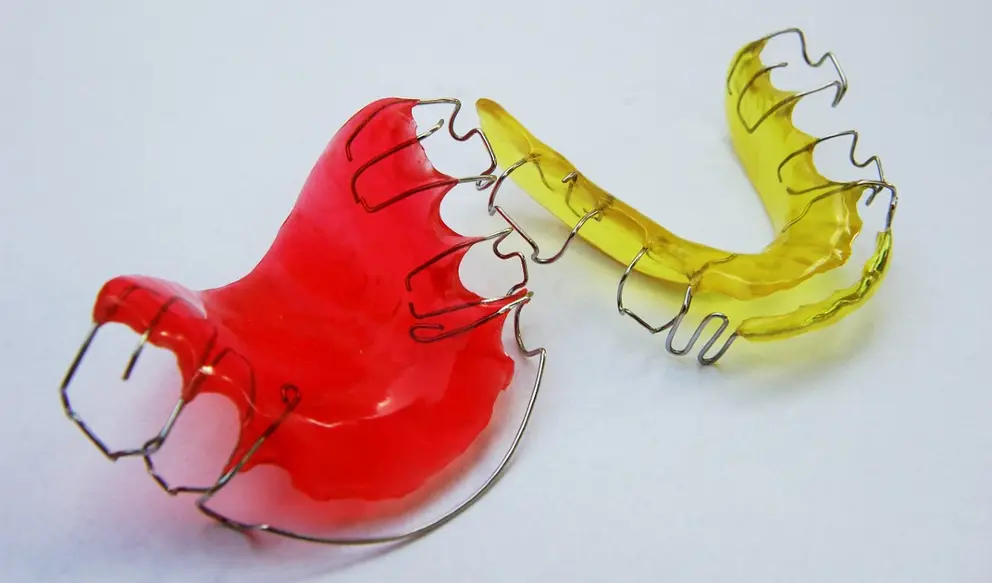
Getting Braces Off & Retainers
Typically, de-bonding braces, which is generally known as removing braces, does not cause pain. In fact, most patients report a feeling of relief and excitement after their braces are removed. This sense of relief is often linked to the anticipation of finally being able to see their beautiful, finished smile, a testament to the journey they’ve undertaken with their braces.
The de-bonding process is carried out by a professional orthodontic team. They use a specialized tool designed specifically for this purpose. The first step involves removing the brackets that have been attached to your teeth. This is followed by the careful scraping off of the glue that was used to hold these brackets in place.
Next, the orthodontic team will loosen and remove the metal bands that have been placed around your molars. The wire that connects the brackets and bands is also removed during this process. While this procedure isn’t painful, it may take some time. Some patients might find it uncomfortable to keep their mouth open for such an extended period.
Once the de-bonding procedure is complete, you transition into what is known as the retention phase. This is a critical stage in your orthodontic journey.
During this phase, your orthodontist will apply a bonded retainer behind your teeth. This type of retainer is discreet and is not easily noticeable. Alternatively, your orthodontist might provide you with a removable retainer. In some cases, they might recommend using Invisalign as a form of retainer.
Wearing retainers, including Invisalign, may initially cause some discomfort. This could be similar to the discomfort you experienced when you first started wearing braces. However, rest assured that you should adjust to your retainers as quickly as you adjusted to your braces.
This expert advice on braces pain relief aims to help you better understand the process and prepare you for the journey ahead. Achieving beautiful smiles involves a process, and wearing braces, including Invisalign, is a significant step towards a healthier and more confident you. Remember, every step you take in this journey brings you closer to the beautiful smile you’ve always dreamed of. So, embrace the process and look forward to the amazing results.

